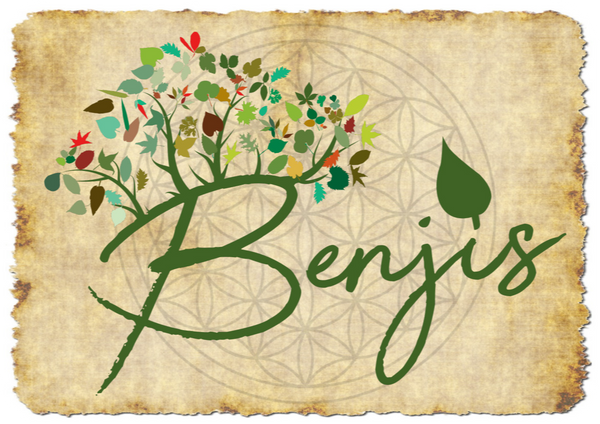Benjis seeds
Balsam herb-Marian herb [Tanacetum balsamita]
Balsam herb-Marian herb [Tanacetum balsamita]
Couldn't load pickup availability
Tips to reduce water requirements
Tips to reduce water requirements
We recommend mulching the beds
Experience has shown that by covering the ground, e.g. with Hay or straw, which can reduce evaporation by 80%. If you keep the beds evenly moist, an optimal moist microclimate will be created under the mulch. This not only promotes the growth of the plants, but also reduces water consumption enormously.
It is also recommended to always keep the beds moist , even if the bed is not used for a certain period of time
The drying out of the soil leads to a huge decline in the micro- and macro-organisms in the soil, which over time leads to an infertile soil . Tests have shown that the water content in the entire bed remains longer when the entire bed is watered over a longer period of time than when it is only watered selectively. Due to the small volume of the poured areas in contrast to the large dry volume, they dry out more quickly than if the entire volume of the bed is filled with moisture. Similar to heating in an apartment.
If the beds are not in use, we recommend sowing with green manure.
Maintaining an energy level always requires less energy than having to reach it again and again.
The balsam herb is an ancient, perennial, edible wild spice, fragrance and medicinal plant from the temperate latitudes of Asia and North America. Also known as Marian herb, the plant has been grown since ancient times in the southern areas of Europe. In the early Middle Ages, the medicinal plant was used as a helpful remedy for fever, liver weakness and menstrual cramps. Im 8. In the 19th century, Charlemagne passed a law that required the cultivation of balsam in monastery gardens. The leaves have a pleasant, strong lemony-minty aroma and retain this scent even when dried. Excellent for flavoring teas, for scented shells and scented bags and as a spice.
General information
Plant family: Asteraceae
Life Cycle: Perennial
Days to harvest: 70 days
Plant height approx.: 80 cm
Root Type: Shallow Root
Nutrient requirements: Weak Eaters
Water Requirements: Means
Winter hardiness: Up to-23 °C
Location: Sunny to partially shaded
Floor: Permeable, moist, slightly loamy, humus
PH: 6.5 to 7.5
Sowing and planting information
Germ Type: Light germ
Seed Depth: 0 cm
Optimal germination temperature: 15-20 °C
Germination time: 10-21 days
Planting, row spacing: 30x30 cm
Optimal mixed culture:-
Unfavorable mixed culture:-
Subtropic climate (Mediterranean) (e. g. B. Portugal, Spain, Italy)
Sow directly outdoors from February to September or prefer in small pots.
Moderate climate (e. g. B. Germany, Switzerland, Poland)
Sow directly outdoors from March to April or prefer in small pots from March.
General
Sow directly in rows, as a litter or pre-cultivate. In the pre-culture, sow the seeds in small pots and let the seedlings grow to the first visible balsam leaves. Then plant the pre-grown plants from the pots directly into the open ground. The planting of the seedlings in the bed is carried out from the 2nd Pair of leaves after the cotyledders.
Marienkraut prefers a sunny and warm location with permeable, loamy and humus-rich soil.
Additional tips
The plants die above ground in winter and sprout again in spring. Buck culture possible. In order to quickly obtain a fine, crumbly and well-drained soil, an additional incorporation of biochar and primeval rock flour is recommended.
Type of propagation
Spread occurs via seeds.
Care Plants
Avoid dehydration. Beets prepared with animal manure or compost and planting in mixed culture replaces additional fertilization. Fertilization is only necessary for bucket culture with plant manure.
Germination ability of seeds: 2-3 years
Other Names
Botanical names: Tanacetum balsamita
English Names: Costmary, Balsam Herb, Ladymint
German names: Marian herb, balsam herb, women's mint, Marienblatt
Portuguese names: Balsamita
Spanish Names: Hierba bálsamo
French names: Herbe baumière
- Made in harmony with nature
- All seeds and seedlings are genetically stable for further propagation
- Our seeds are always checked for germination at regular intervals
Shipping and pick-up information
Shipping and pick-up information
Shipping
We offer CTT shipping for Saagut Europe and USA far! With us you will always receive a tracking number to track your package. Shipping costs differ depending on the shipping region. Here is a list of regions and prices:
National Shipping
Portugal (with the Azores and Madeira Islands)
Envelope or package up to 500g = € 3.50
2 kg Bus Package = 8 €
Package over 2 kg = 16 €
Europe Shipping
Envelope up to 100g = 7 €
500g Bus Package = 9,50 €
1kg Bus Package = 14 €
2kg Bus Package = 20 €
Package over 2kg = 40 €
USA Shipping
Envelope up to 100g = € 7.50
500g Bus Package = 15,50 €
1 kg Bus Package = 24 €
2 kg Bus Package = 33,50 €
Package over 2 kg = 67 €
After you have completed your order with payment, you will receive a shipping confirmation email with your tracking number.
Abholung
You can pick up your order at any time from 12 noon to 8 pm or by appointment with us on site or at the markets we visit.
Simply enter the desired market to pick up in the comment box in the shopping cart.
You can find the markets in the menu on our website or at this link: https://www.benjis.net/pages/market-dates
Share
![Balsam herb-Marian herb [Tanacetum balsamita]](http://www.benjis.net/cdn/shop/files/BalsamkrautMarienkraut-Costmary-Balsamita-Tanacetumbalsamita-www.benjis.net.jpg?v=1709071324&width=1445)





